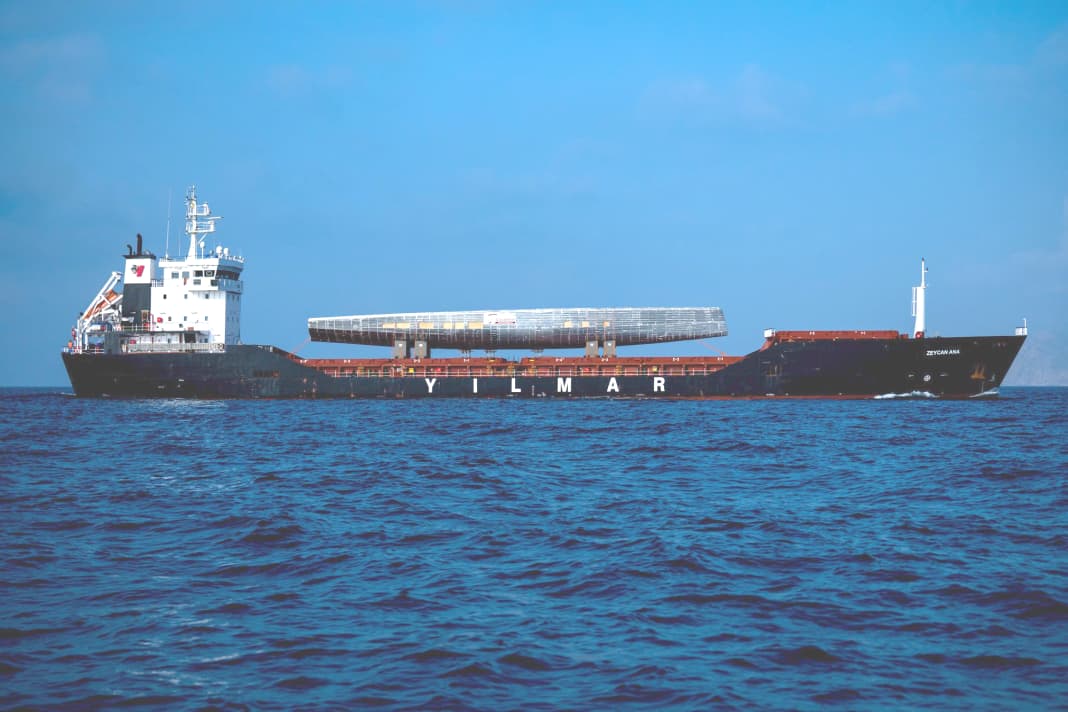





Juan K, short for Juan Kouyoumdjian, is a name familiar to the sailing scene from radical racing machines such as the "Rambler 88", "Skorpios" or, most recently, the ClubSwan 80 "My Song". The fact that the Argentinian designer with a studio in Valencia has now even presented plans for a flybridge format with a canting keel is initially surprising. However, the 54-metre-long and 9.60-metre-wide aluminium slup "Argo" has little to do with motor sailors. It is a joint project with Rob Doyle Design and the result of a pitch, which Juan K probably won thanks to its unusual hull design.
The dynamics of the crack result from the negative alignment of the deck and stem. Juan Kouyoumdjian also worked a tumble-home curve, i.e. a full-surface convex curve, into the freeboard, which is somewhat reminiscent of IOR times or the indented hull sides of the latest Imoca generations and the ClubSwan 125. This takes away some of the deck area, but provides dimensional stability. And that is important for sailing yachts of this size. Because, as Juan K points out, the righting moment is generated more by the dead weight than by the keel. Thanks to its lightweight aluminium construction - it is one of the lightest hulls to leave the shipyard - "Argo" displaces little at 264 tonnes compared to two metre longer formats from Perini Navi, for example. These weigh 540 tonnes with the same construction material.
The swivelling keel is the masterpiece of the "Argo"
The keel is very important on the "Argo", as it swings down to a depth of 9.50 metres(!). This naturally improves the characteristics under sail, which provide 1,382 and 1,905 square metres of surface area downwind between the mooring lines. The slip rig is classic and should manage without a furling boom. Forecasts assume twelve degrees of heel in cruising mode and 21 degrees of heel in racing mode. This is important, as any rolling movement at the raised helm position on the flybridge feels far more extreme than one deck down. With the keel raised hydraulically, the draught should be just under four metres, which makes it possible to enter Saint-Tropez, for example. In addition, the stainless steel fin with lead additive manufactured by APM does not protrude into the interior, as is the case with the internal shafts of lift keels.
This leaves the question of the negative effects of canting keels on superyachts. The development effort is high, as a possible grounding must always be calculated structurally. Now there is no keel bomb in which a crumple zone could be integrated. So Juan K and his team got inventive. Their solution: a small predetermined breaking point for the automatic release of the locking mechanism. A carriage with four bolts is flange-mounted to the piston rod that picks up the keel. Their centres are tapered and break when they come into contact with the ground or an object. The keel yields and, ideally, does not transmit any lateral force to the hull.
The "Argo" is due to sail in two years' time
As with all his designs, Juan K also added a visual detail to the 54 metres that had never been seen before in this form. The stern is adorned with a kind of skeg in the centre, from which no rudder hangs. There is a double version of this far outboard. No, the V-bridge is intended to reduce the impact at sea and in the marina in the event of swell. The "Argo" owner opted for a layout with an aft suite, which, like all the interior areas, is designed by Mark Whiteley.
Omikron Yachts is now working on this ambitious project at the Olympic Marine site in Lavrio. A mammoth project has already been completed here, the ten-year conversion of a compact cruiser into the 106-metre-long "Dream". Two years should be enough to complete "Argo". Another customer from Europe ordered plans from Juan K for a 44 metre long version of the swing keeler, but without a flybridge. The welding work on the hull is again being carried out by Gouwerok in Aalsmeer in the Netherlands, where a second 54-metre hull is to be built for the Greek Omikron shipyard once it is completed.

